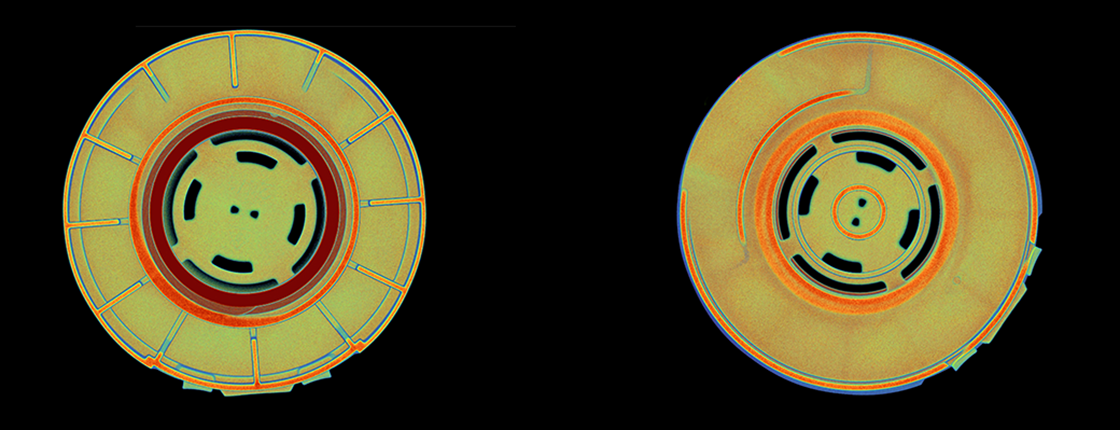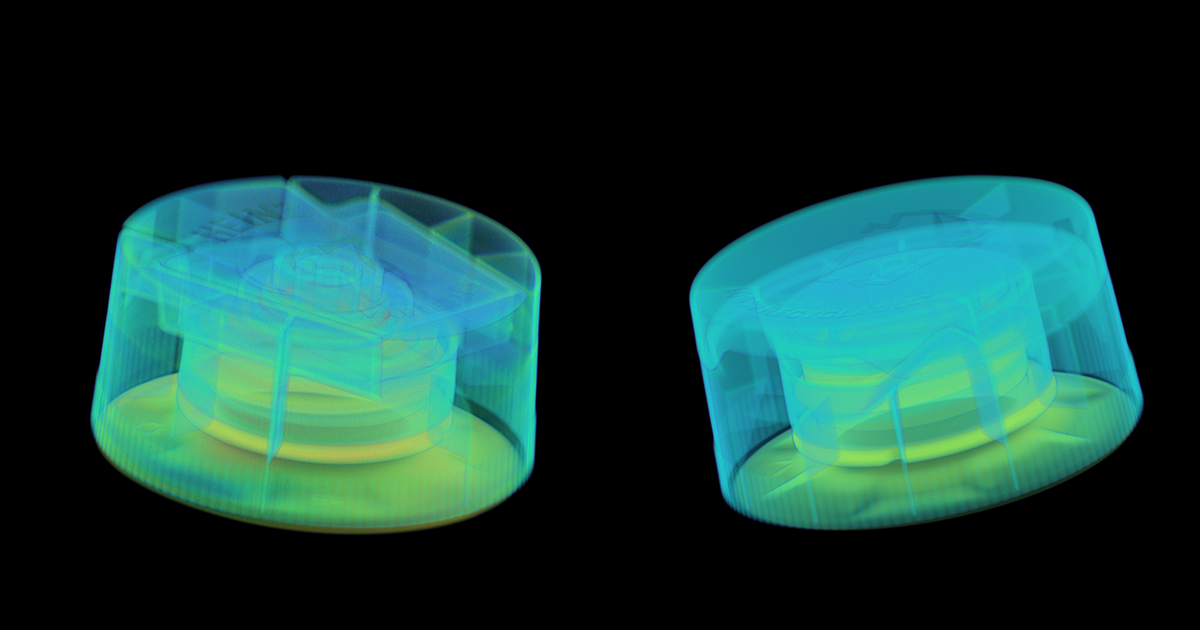The Quality Gap
Behind the Battery Report
Behind the Battery Report
Today, we released Lumafield’s Battery Quality Report, an investigation into the hazards that hide inside the lithium-ion battery supply chain. For this study, I CT-scanned 1,054 cylindrical 18650 cells from ten different brands, spanning the gamut from reputable, well-known battery manufacturers to ultra-discounted cells from Temu and several sources in-between. As battery users, we all intuitively expect alternative-brand cells to be lower quality, but it’s easy to gloss over how much worse they may really be, especially when a cheaper look-alike promises the same or better specs, and the name brands feel overpriced. However, our CT scans revealed much bigger quality gaps than I could’ve imagined, and once we factored in how dangerous a bad battery can be, the story turned from curious to genuinely concerning.
Diving into battery quality questions
As a Technical Product Marketing Manager at Lumafield, I design experiments to test and show how engineers can leverage CT to solve real problems. I’m constantly looking for areas to double-click on, and as a gadget-lover, batteries are all-too-often on my mind. A few months ago, I wrote a blog post about the Anker A1263 power bank recall, and it achieved a surprising level of virality given the relatively unglamorous product it covered. But perhaps the practical pervasiveness of batteries in all of our daily lives is exactly what drove so much interest in the piece.
In that article, I scanned five power banks: enough to make a few concrete observations, but a tiny sample against the realities of production scale. I wanted the insights that could come with a larger dataset, and 18650 cells seemed like the obvious choice. 18650s are standardized battery cells, their name reflecting that they measure 18 mm in diameter and 65 mm long. These cells are absolutely everywhere. Over five billion are produced each year, and they can be found in everything from electric toothbrushes and cordless drills to even some electric vehicles. For example, each of the Anker power banks I scanned contained 3 18650s, and my colleague’s e-bike battery contained a whopping 39. Though the majority of 18650s are assembled into packs of multiple cells and deeply integrated into devices, there are a few applications where the cells are user-replaceable, such as vapes or flashlights, making them relatively easy to procure. Study methodology
I ordered at least 100 cells from each of 10 brands, ending up with 1,054 cells total, given purchase increment minimums and free extras received. Every cell was scanned. Three sets came from the well-known OEMs—Murata, Samsung, and Panasonic—sourced from reputable online stores specializing in 18650 batteries. Three sets came from the rewrap brands Efest, Vapcell, and Trustfire, with Efest and Vapcell coming from reputable 18650 online storefronts, and the Trustfire cells coming from their brand website. The final four were more suspicious. I chose three of the brands for being lower cost: Treasurecase and Maxiaeon came from Temu, Benkia from Amazon. The SOOCOOL cells were not cheap, but were advertised on Amazon as “authentic” Samsung 30Q cells, their wraps closely but not perfectly mimicking the aesthetic of the genuine Samsung cells. A counterfeit SOOCOOL “Authentic 30QP” next to an OEM Samsung 30Q cell. Table of cells scanned for the experiment.
Every battery was labeled on arrival for traceability, then scanned as received. We scanned on a Lumafield industrial CT system with a 130 kV microfocus source. Using Ultra-Fast CT, we scanned each cell in under a minute, then processed the data with our Battery Analysis Module, which automatically finds electrode edges and extracts study metrics in bulk. Lumafield has two industrial CT product lines: Neptune, a compact and easy-to-install solution ideal for R&D offices and labs, and Triton, optimized for high-volume environments. We built the workflow to reflect production realities, because annual battery output is enormous and speed determines practical value. In production, Triton paired with Ultra-Fast CT can scan cylindrical cells in under five seconds, enabling more than 720 cells per hour and making battery inspection feasible at scale.
To support what we saw in the CT scans, I added a few supplementary tests. I measured capacity on one sample from each set. Marketing claims as high as 9,900 mAh appeared on some of the cell listings, a number that far exceeds what this format can deliver, and the measurements confirmed the mismatch. We also ran longer scans on a handful of cells to resolve more fine details and validate the automated measurements.
Defining characteristics of battery quality
The analysis focused on what governed safety. I prioritized three parameters for anode overhang and two for alignment. Median anode overhang per cell gave us a baseline for each brand. I used median rather than mean because a few extreme outliers would have distorted the averages. I also compared the maximum and minimum anode overhang values for each cell. Insufficient overhang increases the likelihood of lithium plating during charge, which accelerates aging and raises the probability of internal shorts. Alternatively, excessive anode length can reach the can and create a different short path. For alignment, we calculated the delta between the highest and lowest positions of both the cathode and the anode. Cylindrical cells are wound, and telescoping introduced during winding can become a seed for shorts and other defects. Large deltas point to weak process control and higher risk elsewhere in the line. Comparison of good and bad anode overhang. Side-by-side of ideal and suspicious edge alignment.
Findings: Far more variance than expected
The results aligned generally with our expectations, but the degree of difference was surprising. OEM cells showed tight control, with anode overhang centered near the 0.50 mm industry average and modest telescoping. The rewraps generally matched the OEM medians quite closely, though their spreads were wider, and the minimum overhang tails in particular stretched lower. Trustfire stood apart from Efest and Vapcell with a significantly worse distribution, a reminder that rewraps are blind boxes that carry real risk. Unless you scan and measure what you buy, you cannot be sure what exactly is hiding under the sleeve.
The low-cost and counterfeit group was in a league of its own. Distributions were broader across every metric, and each brand in this tier produced at least one unit with negative anode overhang. The worst results came from the Temu brands. We found fourteen Treasurecase and fifteen Maxiaeon cells with cathode overhang. Across the entire low-cost group, thirty-three of 424 cells presented cathode overhang, which suggests that as many as one in thirteen such cells may carry geometry that accelerates aging and drives a higher chance of internal shorting. The standard deviations ran roughly seven times larger than the OEMs, which signals much weaker process control and, by extension, a higher likelihood of other hidden defects. Implications and recommendations
These findings have implications for every stakeholder that interacts with batteries, from battery manufacturers and device integrators to end users. Original battery manufacturers prioritize quality, and the study results speak to their tight specifications and strong execution. The risk for these companies sits downstream, with scrap potentially making its way into the rewrap market, or OEM cells being “recycled” and resold when end-of-life devices are dismantled. Scrutiny of scrap procedures and channel partners, as well as improved traceability features, can protect these brands from being tarnished by the actions of less scrupulous players.
Device integrators can reduce their exposure to dangerous batteries by validating their supply with incoming inspection, especially when buying through distributors or less established sources. Battery incidents can seriously mar the reputations of device integrators, making verification critical. Pack design is also essential to ensure battery safety, as building in sufficient spacing and protections can keep potential failures limited to a single cell. Consumers must also actively manage their individual battery risk exposure, given the gaps in supply chain and regulatory oversight. It’s important that users don’t mix brands, capacities, or ages in a shared device, that they protect cells from physical abuse and extreme temperatures, and that end-of-life batteries are recycled properly. Despite the popularity of “dupes,” when it comes to batteries, the savings aren’t worth the risk. Consumers should also familiarize themselves with the warning signs of battery incidents. Heat during or after charging, swelling or a soft feel, hissing, sharp chemical odors, discoloration, liquid residue, sudden drops in capacity, repeated shutdowns, or a charger that refuses to start all suggest internal damage. If you see any of these indicators, stop using the battery immediately and dispose of it at a proper facility.
Parting thoughts
Today’s volatile trade and tariff environment is complicating cell provenance more than ever, and it’s becoming easier and more attractive to slip gray-market substitutes into supply chains. In such a tumultuous ecosystem, CT becomes a practical tool for certainty. Our 754 non-OEM cells were mysteries until we scanned them, and while some matched OEM behavior, others fell far outside any reasonable specification. Most failures will never cause fires, but even a common reliability failure can disrupt the functionality and experience of a product. The rare battery incidents that do ignite are catastrophic, and this is why battery quality is so fundamentally important. Negative anode overhang and large irregularities in edge alignment do not guarantee failure, but they put a heavy hand on the scale in the wrong direction.
Everyone who interacts with batteries, from cell manufacturers and device integrators to the people who use their products, should be intentional with managing these inherently dangerous devices. The Lumafield Battery Quality Report reveals the magnitude of risk in an uncontrolled battery supply chain. Industrial CT inspection allowed us to unearth the risky realities of the 18650 cells we ordered, by turning some of those key quality indicators into measurable geometry. Ultimately, CT is a powerful tool that can make the invisible visible by bringing much-needed clarity to the battery supply chain’s unknowns. SEO Meta Description: A closer look at the Battery Quality Report: methodology, surprising results, and what CT scanning uncovered inside low-cost lithium-ion cells.
CT scans of 1,054 18650 batteries revealed major quality differences between OEM, rewrap, and low-cost cells, with defects concentrated in the cheapest brands.
Negative anode overhang and poor alignment were key risks, raising the chance of internal shorts, accelerated aging, and thermal events.
The study highlights supply chain vulnerabilities and shows how CT can give manufacturers, integrators, and consumers clearer visibility into battery safety.






